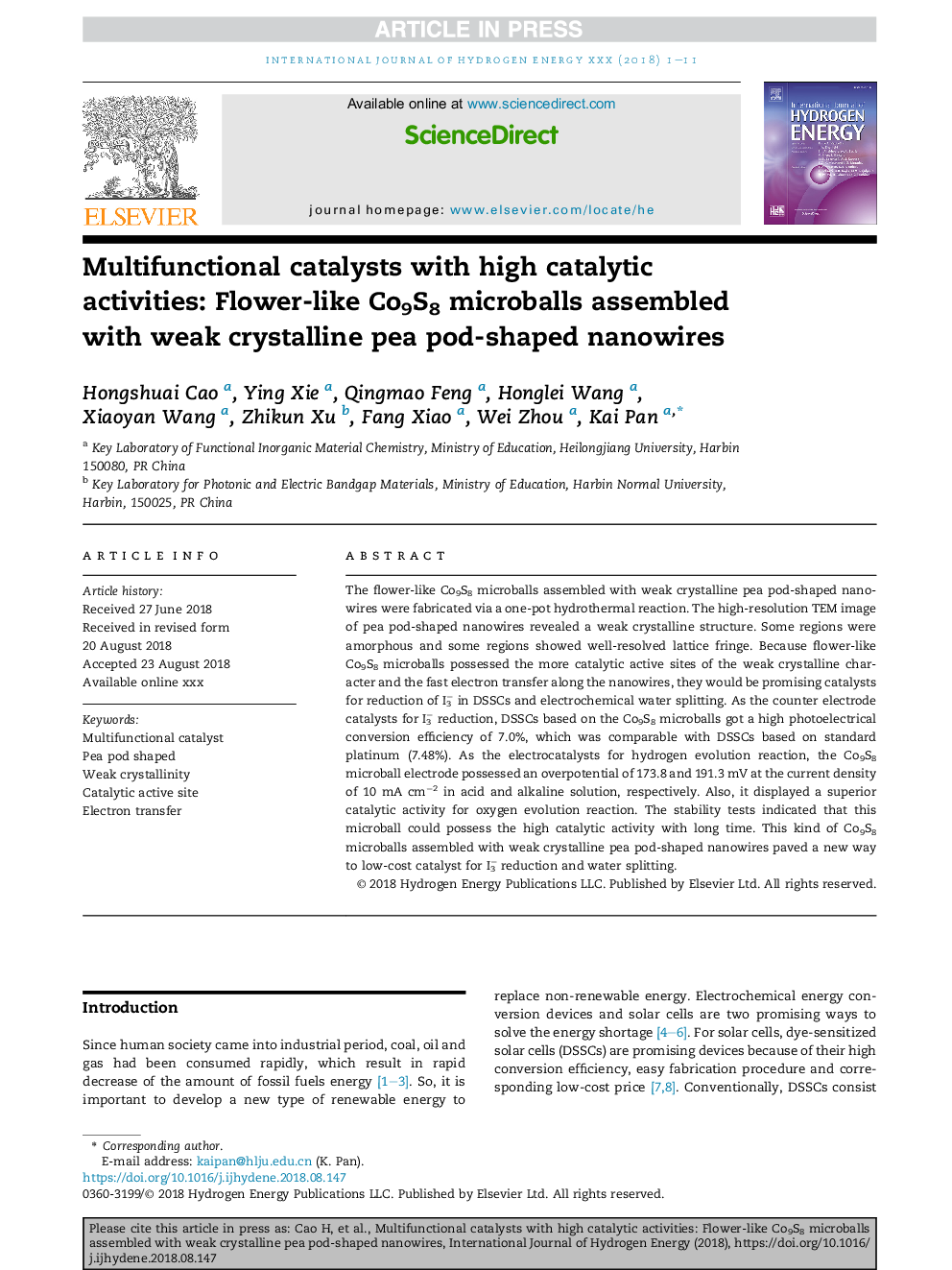| Article ID | Journal | Published Year | Pages | File Type |
|---|---|---|---|---|
| 11011621 | International Journal of Hydrogen Energy | 2018 | 11 Pages |
Abstract
The flower-like Co9S8 microballs assembled with weak crystalline pea pod-shaped nanowires were fabricated via a one-pot hydrothermal reaction. The high-resolution TEM image of pea pod-shaped nanowires revealed a weak crystalline structure. Some regions were amorphous and some regions showed well-resolved lattice fringe. Because flower-like Co9S8 microballs possessed the more catalytic active sites of the weak crystalline character and the fast electron transfer along the nanowires, they would be promising catalysts for reduction of I3â in DSSCs and electrochemical water splitting. As the counter electrode catalysts for I3â reduction, DSSCs based on the Co9S8 microballs got a high photoelectrical conversion efficiency of 7.0%, which was comparable with DSSCs based on standard platinum (7.48%). As the electrocatalysts for hydrogen evolution reaction, the Co9S8 microball electrode possessed an overpotential of 173.8 and 191.3Â mV at the current density of 10Â mAÂ cmâ2 in acid and alkaline solution, respectively. Also, it displayed a superior catalytic activity for oxygen evolution reaction. The stability tests indicated that this microball could possess the high catalytic activity with long time. This kind of Co9S8 microballs assembled with weak crystalline pea pod-shaped nanowires paved a new way to low-cost catalyst for I3â reduction and water splitting.
Related Topics
Physical Sciences and Engineering
Chemistry
Electrochemistry
Authors
Hongshuai Cao, Ying Xie, Qingmao Feng, Honglei Wang, Xiaoyan Wang, Zhikun Xu, Fang Xiao, Wei Zhou, Kai Pan,
